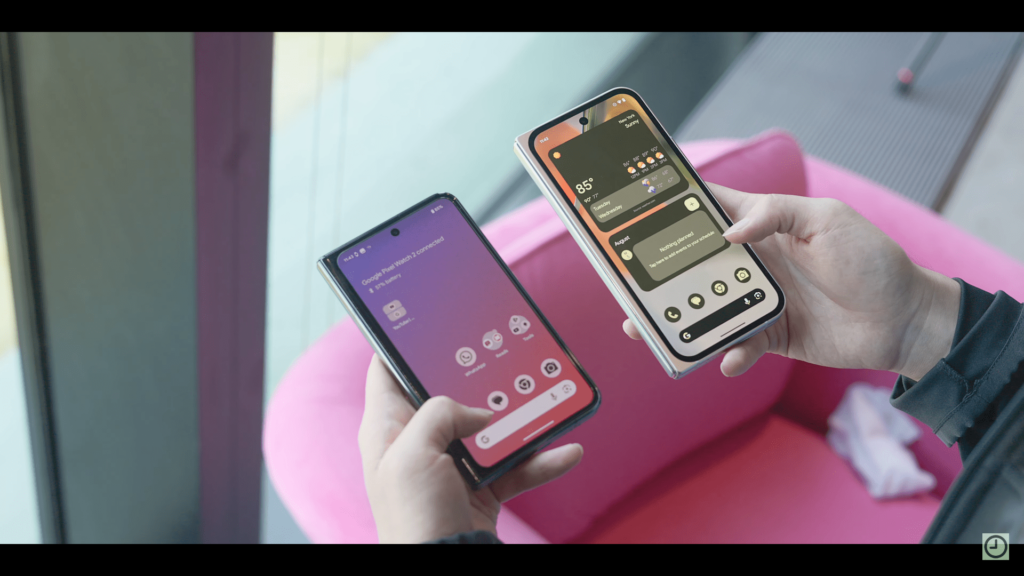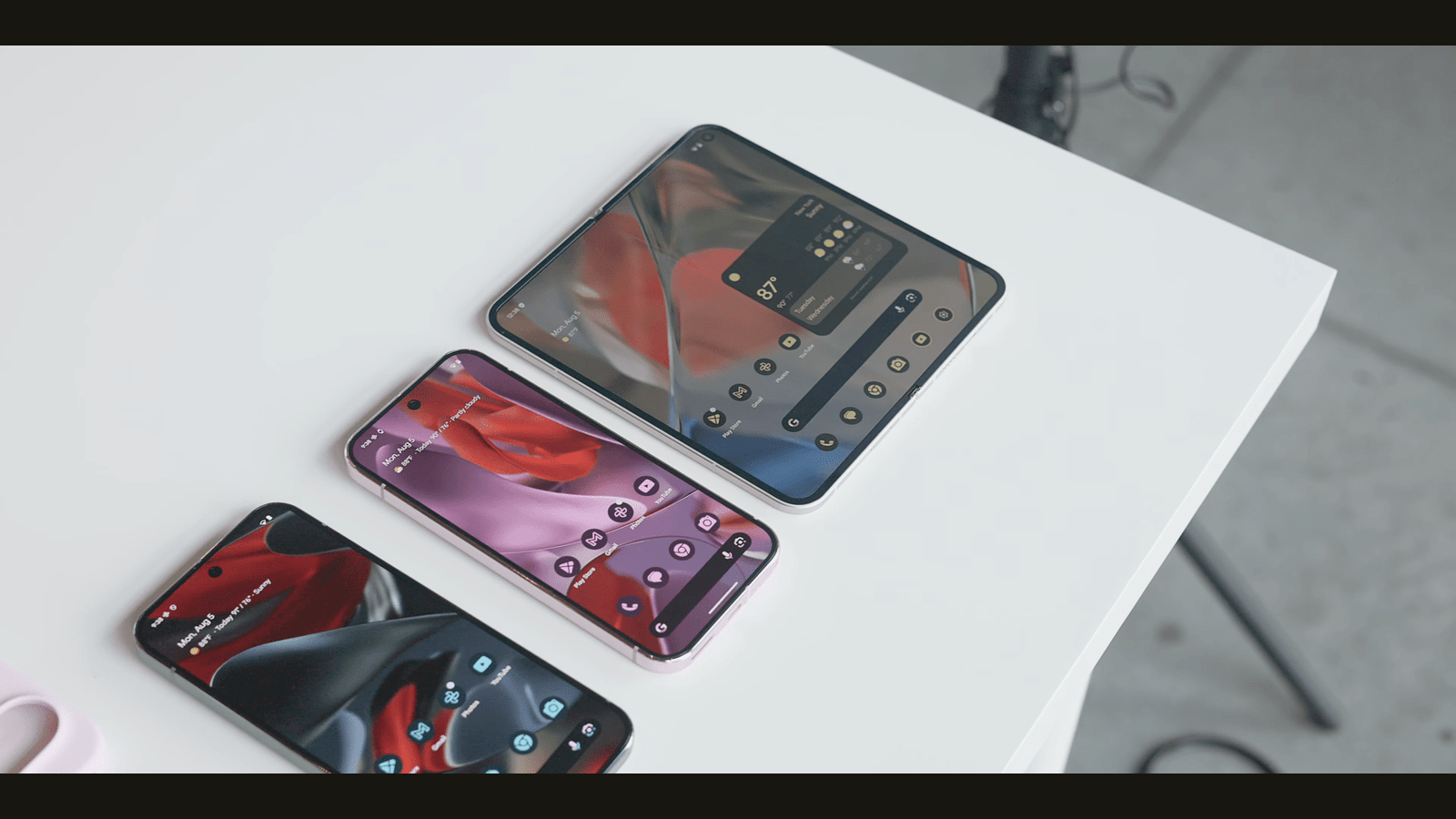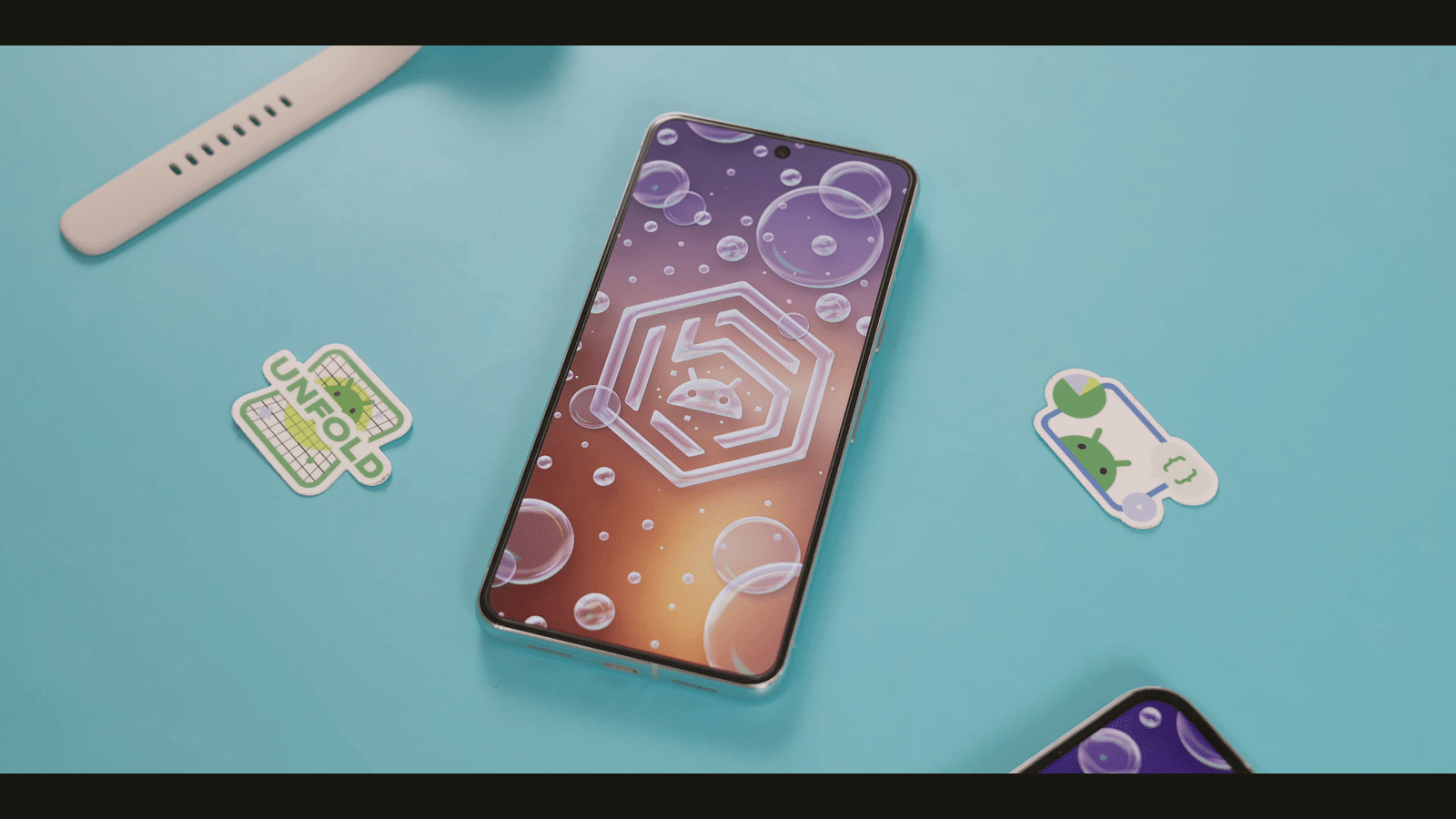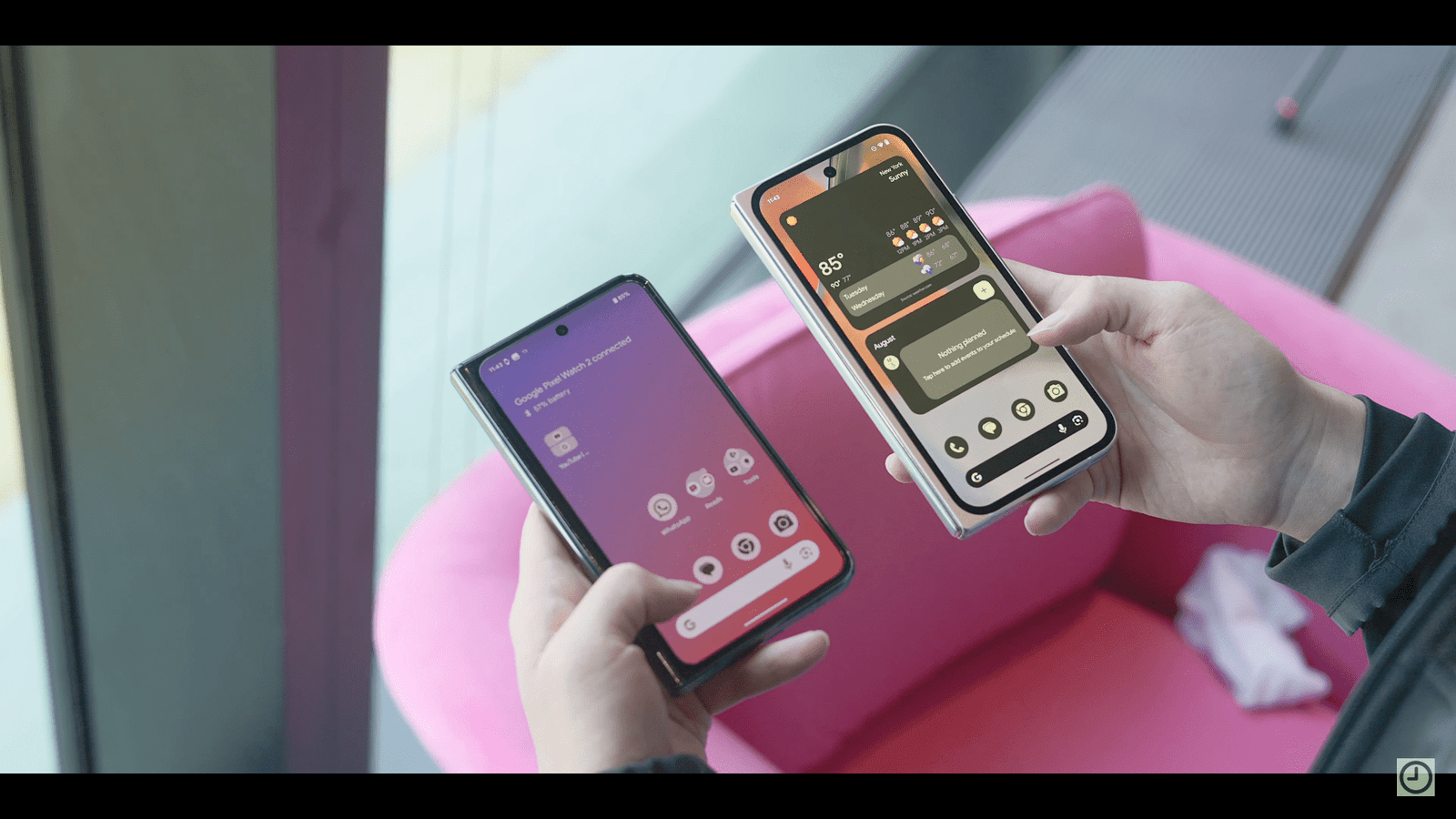Well, anubhav, it’s here. Google has finally unveiled its second-generation foldable—the Pixel 9 Pro Fold. It builds upon the first-gen Pixel Fold with a few truly radical changes and solves some common complaints. Honestly, having had a little hands-on time with this device, I firmly feel the Pixel 9 Pro Fold is going to be a super competitive choice in the foldable space. Below is where we will dive deep into what’s new and compare the Pixel 9 Pro Fold to other flagship phones.
But before we go any further, hit that subscribe button to be notified whenever we post more Pixel content. Also, be sure to check out our exclusive Google wallpaper packs, available now inside our Channel membership. Just hit the join button for more information.

A New Level in Foldable Displays
First off, one will notice that with the Pixel 9 Pro Fold, a worthy improvement in terms of display and the hinge mechanism is here. Both the inner and outer screens have had improvements over their first-generation ancestors. The Pixel 9 Pro Fold, effectively, acts like a normal Pixel 9 when closed — that is if you open it up; the inner screen has a much squarer form factor with the same aspects ratio as the OnePlus Open. This new design should work better with app compatibility and makes everyday tasks like typing, filling out forms, or using Google Maps more comfortable.
What really sets the Pixel 9 Pro Fold apart is the unbelievable brightness of its displays. The device comes in with Google’s “Super Actua” branding; its screens can get insanely bright, up to 27,000 nits peak or about 1,600 in HDR modes. This will introduce substantial enhancement to visibility, specifically on the inner screen—which, if one remembers—was one of the weak points of the first-gen Pixel Fold. The new displays also have a slightly less noticeable crease, especially compared to the Z Fold 6. The improvements positioned the Pixel 9 Pro Fold as a significantly better entry where cleaner viewing is concerned.
A Smoother, More Satisfying
Another key upgrade with the Pixel 9 Pro Fold is the hinge mechanism : with my hands-on time, I have found that this hinge does open a whole lot more smoothly and does feel more satisfying to interact with. The device now opens fully flat with no effort at all, as it should have been. While I still wish there were some Google or Pixel branding on the hinge itself—akin to what Samsung does with their devices—this is a superficial issue, at best. From a technical perspective, these changes transcend the Pixel 9 Pro Fold into being a totally different device class, particularly from that first-gen model.

Thinner Design
The Pixel 9 Pro Fold has drastically changed the design. The device now aligns very closely with the regular Pixel 9 series, having this flat side railing that feels much tidier than the first-gen Pixel Fold, which was very rounded and finished in glossy materials. But, most importantly, the design change is really impressive because this phone feels paper-thin. When closed, the Pixel 9 Pro Fold is just 10.5mm thick, making it barely thicker than a regular smartphone. When open it becomes an incredibly thin at just 5.1mm thin; compare that to the Z Fold 6 Figure 6 which unfurls to 5.6 mm and I called that modern and futuristic looking in feel. So you can imagine that the Pixel 9 Pro Fold is that much better.
But not everything about the design is perfect. The updated camera module, for instance, is a bit awkward to look at. I understand why Google did not continue with the camera bar – it would have fought with the thin minimal aesthetic they were going with – but it still feels a bit clunky and not as sleek as some other flagships. That being said, it’s a rather slight flaw and doesn’t take away from the overall sleekness of the device.
Power of Google Tensor G4
Under the hood, the Pixel 9 Pro Fold is supported by the latest Tensor G4 chip and 16 GB of RAM. By comparison, Tensor G2 is severely outdated with 12 GB of RAM. We haven’t had enough time to test the G4 properly, but I’m quite confident it will hold up better in this new device than the G2 did. Only concerns me that the insanely thin form factor might present heat issues, but we’ll have to wait and see.

So how does the G4 Tensor stack up vs other flagship processors? The G4 is designed in a way that it unleashes AI and machine-learning activities, expanding to become ever so vital in today’s smartphones. It is more than mere raw power; it is how effectively this power could be put to use. The G4 should make a difference in computational photography, voice recognition, and real-time translation. This provides a small advantage to the Pixel 9 Pro Fold in most AI-dependent use cases and works to bring it up to par with other, similar flagship chips like the Snapdragon 8 Gen 2 and Apple’s A17 Bionic.
Software: Foldable-Specific Features and More
As my time using the Pixel 9 Pro Fold persisted, I also focused in on some new software features that come with the device. Perhaps most notably, it introduces a new camera mode, “Made You Look”, which plays these cute little animations on the cover screen when taking a photo to try and get your subject to smile. This is a really nice touch and kind of reminds me of the Motorola approach to throw in fun custom functions on their devices.
There might be more features exclusive to Foldable that we have not seen, but “Made You Look” is the only one that stood out during my hands-on experience. The Pixel Studio app will also sport a nice UI for the inner screen and we are getting an updated weather interface. Sure, Pixel Screenshots Plus and Gemini Live will likely be adjusted for the interior screen form factor, but other than that, the foldable experience seems largely the same from a software perspective. Whether it was Android 15 that will bring more changes to this, we will find out later.
Also check Your Phone Might Be at Risk! CERT-In has issued an advisory
Camera
The cameras are actually worth mentioning. We just had enough time to fiddle with them in our hands-on. Hardware here is just super-similar to what shipped with the first-Gen Pixel Fold: a 10.8MP telephoto lens, 10.5MP ultrawide lens with a bit wider field of view than we had last time, and a 48MP main lens. All the sensors are around the same size and have around the same aperture, so it feels like Google has pulled a Samsung here and just kept the exact same cameras as last Gen.
But I’m hopeful that the Tensor G4 and Google’s computational photography will make a real difference in performance and capability. We’re also getting some new camera features like Video Boost, Pro controls, a macro mode, and Magic Editor upgrades. While I’d have liked to see more important upgrades to the camera hardware, these software enhancements really should still make for a solid camera experience.
Is the Pixel 9 Pro Fold Worth It?
Having the Pixel 9 Pro Fold for a very short amount of time, I’m pretty positive that I will return my personal one and never look back. Love the drive toward a thinner form factor. I’m really glad we have a foldable device with the latest Google silicon, and the display upgrades are great. The taller aspect ratio feels perfect for my needs, and I’m glad we’re finally getting Video Boost.
On the whole, however, it does seem that the Pixel Fold series has been elevated to sit alongside the other flagship devices—my general review of the original Pixel Fold. I do have one tiny worry: about the cameras. These seem to be only incrementally better, in truth, than those on the first-gen Pixel Fold. But when it comes to being the best foldable that can get me the best camera experience, I’ll still place the bet on the Pixel 9 Pro Fold.
What do you think of the new release? Does it sound like the Pixel 9 Pro Fold is hugely improved, or are you keeping the first-gen device? Leave a comment below and let me know. We have until September before this thing actually launches, so we’ve got some time to think this over, and in the meantime, shall I lead? Big shout-out to our channel members—thank you so much for keeping me afloat with all things Pixel. We’ve got a lot more and I’ll see you in the next one!
